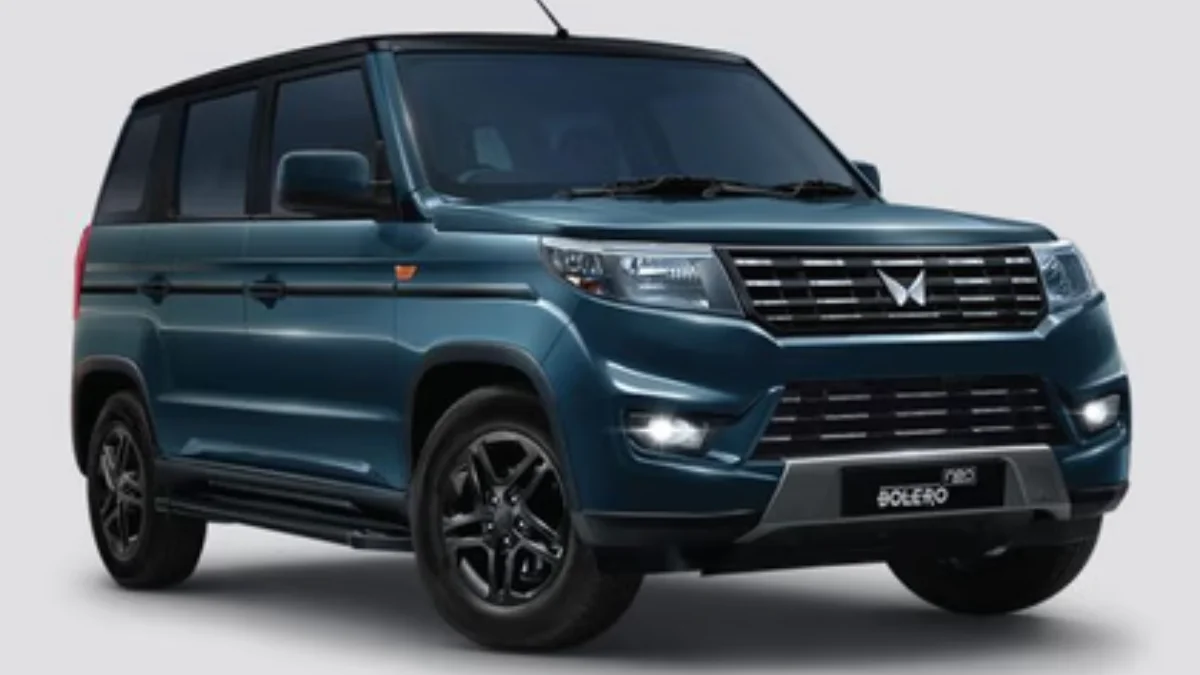Mahindra has officially launched the 2025 facelift of its popular Bolero SUV along with an updated Bolero Neo. This launch combines the Bolero’s reputation for toughness with subtle improvements in design, comfort, and options. With prices starting at ₹7.99 lakh (ex-showroom), Mahindra aims to provide better value while staying true to the vehicle’s utilitarian roots.
In this article, I break down what’s new covering the design, interior, features, and variant options and evaluate whether these changes matter in a competitive SUV market. I also connect Mahindra’s broader strategy, looking at Nuvexic’s report on its XUV 3XO GST cut and Yamaha’s significant price reductions in related segments to see how pressure builds across categories.
Exterior & Variant Refresh: Bold but Grounded
The 2025 Bolero keeps its classic shape but receives updates to stay relevant. Key visible changes include:
- A new chrome grille with vertical slats, a redesigned bumper with updated fog lamps, and new alloy wheel options.
- Introduction of the “B8” top variant along with the existing B4, B6, and B6(O) trims, expanding the features offered.
- The Neo facelift features an updated grille, integrated DRLs, dual-tone body panels, and a new N11 variant.
These changes modernize the Bolero while maintaining its rugged identity.
Interior & Features: Comfort Gains Incremental
Inside, Mahindra has made practical upgrades:
- Leatherette upholstery on higher trims, updated seat padding, and more ergonomic designs.
- A basic touchscreen infotainment system and a USB Type-C port for modern connectivity.
- Steering-mounted controls, extra bottle holders, and improved interior finishes across variants.
These updates improve comfort and usability, especially for daily driving.
Powertrain and Mechanical Continuity
As expected, the facelifts keep the existing mechanical setup:
- The Bolero continues with the 1.5-litre diesel engine, producing roughly 75 bhp and 210 Nm of torque, paired with a 5-speed manual.
- The Bolero Neo features the 1.5-litre mHawk100 engine in its facelifted version, delivering about 100 bhp and 260 Nm, with no changes to the gearbox or layout.
- The suspension and chassis remain largely the same as Mahindra focuses on comfort rather than a performance overhaul.
The choice here is evolutionary, not disruptive.
Pricing & Market Strategy
Mahindra’s refreshed lineup offers more than just looks it employs a competitive pricing strategy:
- The Bolero ex-showroom starts at ₹7.99 lakh, rising to ₹9.69 lakh for the new B8 variant.
- The Neo starts at ₹8.49 lakh, with the N11 variant priced near ₹9.99 lakh.
- Earlier variants across both models have experienced cuts of ₹25,000 to ₹80,000 to remain competitive.
- The Bolero and Neo provide more value without significant price increases a calculated move given the volatile market.
By setting prices wisely, Mahindra frames these updates as value additions rather than extra costs.
Who Stands to Gain: Buyer Guidance
Choosing between trims and models can feel complex. Here’s a breakdown:
- Basic utility & budget: B4 / entry Neo trims rugged, minimal, durable.
- Best feature balance: B6 / N8 variants moderate features for daily use.
- Feature-packed & stylish: B8 / N11 highest variant with more comfort features and visual appeal.
- Neo vs. Bolero: The Neo is ideal for those wanting modern design in a compact form, while the Bolero remains a classic choice for utility.
Most buyers will find value in the mid and top trims, where added comfort aligns with core ruggedness.
Risks, Gaps & Market Headwinds
Not every expectation is met with this update:
- There’s no addition of ADAS or advanced driver aids, falling short compared to competitors.
- While interiors are slightly better, they are not transformed buyers seeking luxurious cabins may feel disappointed.
- The unchanged powertrain limits performance advancements and could strain future expectations.
- The SUV market is growing more competitive, and larger Mahindra models are capturing more attention, so Bolero must remain relevant.
Strategic Lens: Broader Moves & Competitive Pressure
Mahindra’s refresh strategy goes beyond the Bolero. The recent GST cut on its XUV 3XO boosted sales, and the effects of that change are felt across the SUV lineup. The Bolero facelift takes advantage of that momentum with its pricing and updates.
At the same time, in the two-wheeler and related sectors, companies like Yamaha are cutting prices to drive demand. In this environment, every upgrade or feature matters. The Bolero refresh may serve to retain current customers as much as attract new ones.
Conclusion
The 2025 Mahindra Bolero and Bolero Neo facelifts are cautious yet smart not groundbreaking, but strategic. Mahindra refines its workhorse SUVs with improved design, better features, and sensible pricing while keeping its tough DNA intact.
For buyers expecting major changes, this update may feel minor. For those looking for more value without high costs, it works well. The true test will be how dealers react and whether sales momentum continues. Bolero's legacy is built on longevity, and this update aims to ensure it can compete in the changing SUV landscape.
Stay tuned for more coverage of Mahindra’s future SUV plans and how the Bolero continues to evolve in 2025 and beyond.
Frequently Asked Questions
Q: What is the Mahindra Bolero B8 on-road price? A: Ex-showroom it’s ₹9.69 lakh; on-road costs depend on state taxes, so prices might vary.
Q: What updates does the Bolero Neo facelift bring in 2025? A: It features updated exterior styling, a new N11 variant, improved interiors, and better comfort options.
Q: Is the Mahindra Bolero 2025 a new SUV or just a facelift? A: It’s a facelift of the existing model, with cosmetic, variant, and feature updates not an entirely new model.
Q: Will there be a petrol or electric Bolero in the future? A: There’s no official confirmation yet; Mahindra still relies on diesel for these models.
Q: What is Mahindra’s broader SUV strategy? A: It leverages policy changes and pricing strategies across models (like the XUV 3XO GST cut) to stay competitive in all segments.

